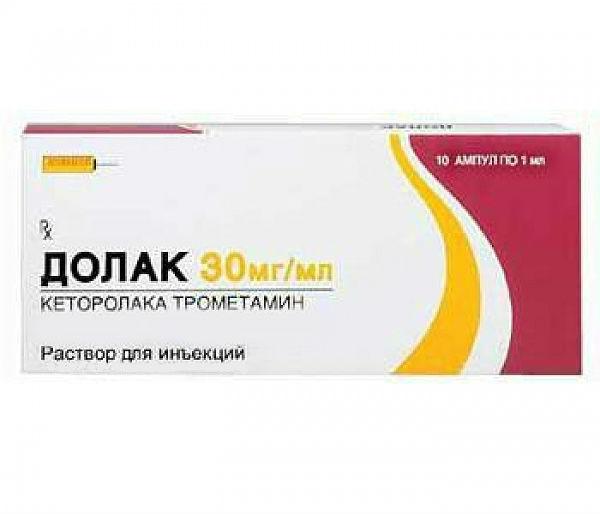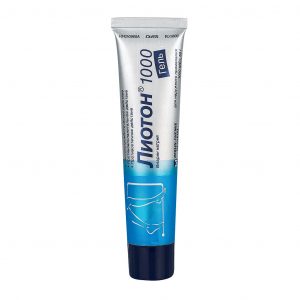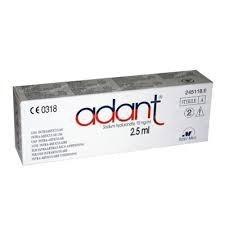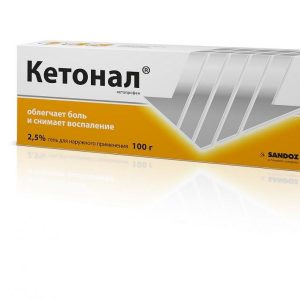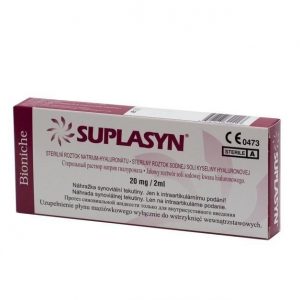Description
Release form
Solution for intravenous and intramuscular administration.
Packing
10 ampoules
Pharmacological action
Pharmacological action – analgesic, antiplatelet, antipyretic, anti-inflammatory.
Inhibits cyclooxygenase (mainly in peripheral tissues), inhibits the synthesis of PG – modulators of pain sensitivity, thermoregulation and inflammation. The analgesic effect develops after 1/2 hour, reaches a maximum after 1-2 hours and lasts 4-6 hours. It inhibits platelet aggregation, reduces the concentration of thromboxane and increases bleeding time.
Indications
Pain of moderate to severe intensity (short relief, mainly in the postoperative period).
Contraindications
Hypersensitivity including to other NSAIDs, peptic ulcer of the stomach and duodenum, acute history of ulcers, perforation or gastrointestinal bleeding, moderate and severe renal failure, risk of its development with hypovolemia or dehydration, hemorrhagic stroke, conditions with a high risk of bleeding or incomplete hemostasis, preoperative period and during surgery (due to the high risk of bleeding), the simultaneous use of other NSAIDs, including aspirin, as well as pentoxifylline pregnancy, childbirth, breastfeeding, age up to 16 years.
Special instructions
Dolaka injection is not compatible in the same syringe with promethazine, hydroxyzine (precipitate) is compatible with physiological saline, 5% glucose solution, Ringer’s solution, Plazmalit solution, as well as with infusion solutions containing aminophylline hydrochloride aminophylline , dopamine hydrochloride, short-acting human insulin, and heparin sodium salt.
Composition of
1 ml of solution for intravenous and intramuscular administration contains: active substance – ketorolac tromethamine 30 mg
excipients – sodium chloride, edetate disodium, propylene glycol, buffer solution (potassium dihydrogen phosphate, sodium hydroxide, water for injection), sodium hydrochloric acid – for adjusting the pH, water for injection.
Dosage and administration
Inside, in / in (stream, for at least 15 seconds), in / m (deep into the muscle, slowly). The dose is selected individually, taking into account the severity of the pain syndrome.
Single doses for intravenous administration to patients under 65 years of age – 10-30 mg, every 4-6 hours. Patients older than 65 years or with impaired renal function of 10-15 mg, every 4-6 hours. patients under 65 years of age 10-30 mg, every 6 hours (with continuous infusion – the initial dose is 30 mg, then at a rate of 5 mg / h) for patients older than 65 years or with impaired renal function – 10-15 mg every 6 hours in a jet . Duration of use no more than 5 days.
Inside, 10 mg up to 4 times a day. The highest daily dose is 40 mg. Course duration no more than 7 days.
When switching from parenteral administration to oral administration, the total daily dose of both dosage forms on the day of transfer should not exceed 90 mg for patients under 65 years of age, and 60 mg for patients older than 65 years of age or with impaired renal function ( tablets should not exceed 30 mg).
Side effects
From the nervous system and sensory organs: headache, dizziness, nervousness, tremor, impaired ability to concentrate, asthenia, depression, hallucinations, paresthesias, convulsions, impaired taste and vision.
From the cardiovascular system and blood (blood formation, hemostasis): decrease or increase in blood pressure, palpitations, anemia, eosinophilia, thrombocytopenia, leukopenia.
From the respiratory system: dyspnea, cough, bronchospasm, bronchial asthma, pulmonary edema.
From the digestive tract: dry mouth, stomatitis, nausea, vomiting, feeling full of the stomach, flatulence, constipation or diarrhea, dyspepsia, gastritis, peptic ulcers, rectal bleeding, melena.
From the genitourinary system: hematuria, glomerulonephritis, nephrotoxic syndrome, acute renal failure, urinary retention, polyuria, frequent urination.
From the skin: pallor of the skin, itching, rash (including hemorrhagic), pain at the injection site.
Allergic reactions: anaphylaxis, anaphylactoid reaction, laryngeal edema, swelling of the tongue.
Other: impaired liver function.
Drug interactions
Acetylsalicylic acid and other NSAIDs mutually increase the risk of serious side effects. Pentoxifylline and substances that affect hemostasis (warfarin, heparin, dextrans) increase the likelihood of bleeding. Probenecid reduces plasma Cl and volume of distribution, increases plasma concentration, and T 1/2. Reduces the diuretic effect of furosemide. Concomitant use with ACE inhibitors may increase the risk of impaired renal function.
Storage conditions
In a dry, dark place at a temperature of 15 25 ° C.
Keep out of the reach of children.
Term hodnosty
2 years
Pharmacy terms
Prescription
Form of Treatment
simply entails dlya inaektsiy
